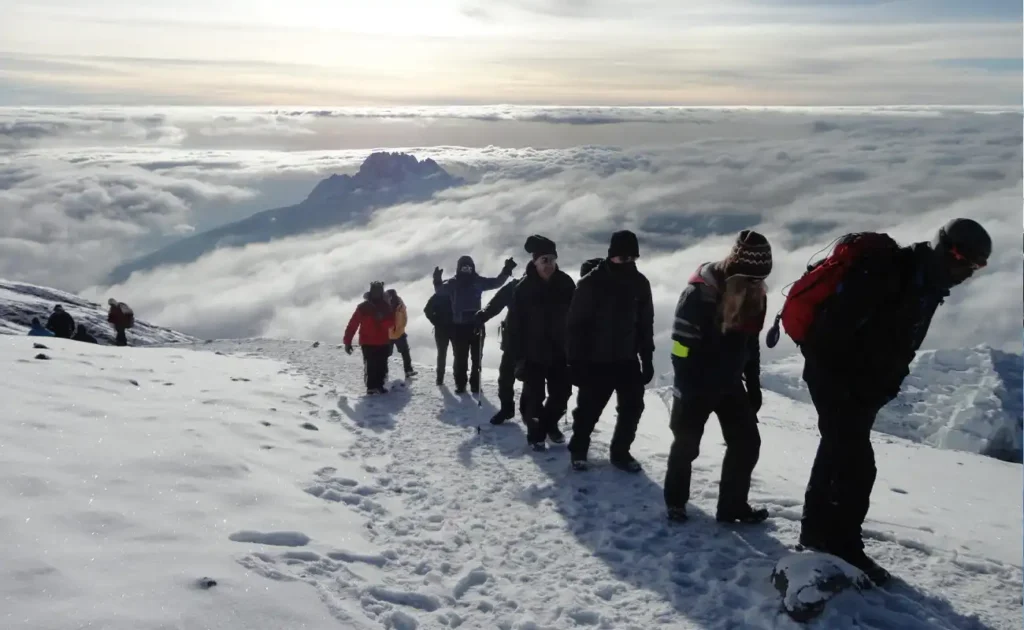The Maasai, renowned for their rich cultural heritage, have uniquely managed to preserve their traditions amid rapid modernization. Many people are curious about whether these vibrant, traditional communities are open to tourists. As it turns out, many Maasai villages do welcome visitors, offering a rare glimpse into their daily lives and customs.
Tourism in Maasai villages is not a novelty; it has historical roots dating back to the early 20th century. About 40% of Maasai families depend on tourism as a significant income source today. Visitors get to participate in cultural ceremonies, dance performances, and even cattle herding, fostering a deeper understanding and respect for Maasai culture.

Are Maasai villages open to tourists?
Many people wonder whether Maasai villages are accessible to tourists. The answer is yes! Several Maasai villages welcome visitors, providing them with a unique glimpse into the lives, traditions, and culture of the Maasai people. This visit offers an authentic cultural exchange, which benefits both tourists and the local communities. The interaction fosters understanding and respect between different cultures.
Visitors to Maasai villages can engage in a variety of activities. They can participate in traditional ceremonies and dance performances. Guests might also learn about the Maasai’s unique way of life, including cattle herding and traditional medicine. These activities provide a richer, more immersive experience for tourists. Moreover, such interactions help preserve Maasai traditions by sharing them with a broader audience.
Tourism plays a significant role in the Maasai communities’ economy. Many families rely on income from tourism to support their livelihoods. This financial support helps fund education and healthcare within these communities. By visiting these villages, tourists contribute directly to the well-being of the Maasai people. This relationship benefits both sides, promoting sustainable tourism practices.
When visiting a Maasai village, it’s essential to approach with respect and understanding. Tourists should follow local guidelines and listen to their hosts. This behavior ensures a positive experience for both visitors and the Maasai people. Respectful tourism preserves the integrity of the Maasai culture while enriching the traveler’s experience. It’s a win-win for everyone involved.
Exploring the Accessibility of Traditional Maasai Communities
Maasai villages, known for their vibrant traditions, are accessible for visitors eager to learn about this unique culture. Getting to these villages often involves traveling through scenic landscapes, adding to the adventure. Many tour companies, including Sia Yangu Safari, offer organized trips that ensure a smooth visit. These companies have established relationships with local villagers, enhancing the tourist experience. This access allows an enriching connection between visitors and the Maasai people.
For those planning their visit, knowing the best time of year to go is essential. The dry seasons, from June to October and January to February, are ideal for visiting. During these periods, the villages are more accessible, and cultural activities are in full swing. Visitors can observe daily routines, such as cattle herding and traditional ceremonies. This timing enhances the chance of experiencing Maasai culture authentically.
Visitors are advised to adhere to certain customs and guidelines when accessing Maasai villages. Respecting local dress codes is important; modest clothing is preferred. Paying attention to local etiquette, like greeting elders respectfully, makes the visit more welcoming. Following the guidance of tour leaders, like those from Sia Yangu Safari, ensures respectful interactions. This approach fosters mutual respect and understanding between tourists and villagers.
Tourists should also consider the environmental impact of their visit. Sustainable travel practices, like minimizing waste and respecting wildlife, are crucial. Many tour groups focus on eco-friendly practices to protect the Maasai land. Supporting local crafts and buying souvenirs directly from villagers also promotes sustainability. This mindful approach aids in preserving the Maasai way of life for future generations.
Cultural Significance of Maasai Villages
Maasai villages hold immense cultural value, serving as the heart of the Maasai community’s traditions. These villages are often organized in distinct, circular layouts, symbolizing unity and protection. Central to the Maasai way of life, they are the venue for essential rituals and ceremonies. These traditions have been preserved and passed down through generations, maintaining the community’s strong cultural identity. The village is more than just a home; it is a living museum of the Maasai heritage.
The Maasai people are known for their distinctive attire, which plays a significant role in their culture. Brightly colored shukas, beadwork, and jewelry are not only beautiful but also convey social status and age. These elements of Maasai dress are crafted meticulously by hand, showcasing exceptional skill. Tourists often find these items fascinating and sometimes get the chance to purchase them, supporting local artisans. This traditional attire makes the Maasai instantly recognizable and maintains their unique cultural image.
In Maasai villages, stories and folklore are vital in passing knowledge and values. Elders often gather the younger generation to share tales of bravery, history, and moral lessons. This oral tradition strengthens the community’s bond and ensures that Maasai history is not forgotten. Through storytelling, the Maasai preserve their heritage without the need for written records. It reflects the richness of their cultural tapestry.
Religious beliefs also play a crucial role in the cultural significance of Maasai villages. They worship a deity called Enkai, whom they believe is central to all life’s aspects. Rituals and ceremonies dedicated to Enkai are performed to seek blessings and guidance. These religious practices are deeply intertwined with their daily lives, from birth to death. Understanding their spiritual beliefs offers deeper insight into the Maasai’s way of life.
Experiences Offered in Maasai Villages for Tourists
Tourists visiting Maasai villages can participate in a wide variety of enriching experiences. One of the most popular activities is attending traditional dance performances. The Maasai showcase their famous jumping dances, known as “adumu,” which are a part of initiation ceremonies. These performances are lively and filled with energy, captivating the audience. Watching and even joining in these dances creates unforgettable memories.
Another engaging experience is learning about Maasai craftsmanship. Tourists can observe and sometimes partake in beadwork workshops. The intricate art of bead-making is an essential part of Maasai culture, used in creating jewelry and ornaments. Visitors can purchase these beautifully crafted items directly from the artisans. This not only provides a unique souvenir but also supports the local economy.
For those interested in daily life, there are opportunities to join the Maasai in their everyday activities. Tourists can accompany herders as they tend to their cattle, getting a firsthand look at the pastoral lifestyle. They may also participate in the preparation of traditional Maasai meals. These experiences offer a deeper connection and understanding of the community’s way of life.
Educational tours are available for visitors keen on learning about Maasai history and customs. Guided tours often include visits to important cultural sites within the village. Knowledgeable guides, often from the community, provide insights into the significance of these locations. This educational aspect enhances the overall learning experience for tourists. It’s a great way to deepen cultural understanding while exploring new environments.
Tourists can also attend traditional ceremonies, such as weddings or coming-of-age rituals. These events are deeply significant to the Maasai and offer a rare glimpse into their most sacred traditions. Being a part of these ceremonies allows tourists to witness the importance of community and continuity in Maasai life. These authentic experiences are both moving and educational.
Lastly, visitors can contribute to community projects, which often include building schools or health clinics. These projects are a way for tourists to give back to the community. Participation in such activities strengthens the bond between tourists and the local people. It provides a sense of fulfillment and purpose. Engaging in these projects leaves a positive impact long after the visit ends.
Sustainable Tourism and Its Impact on Maasai Communities
Sustainable tourism is crucial for the well-being of Maasai communities. It ensures that the influx of visitors does not harm the natural environment or the cultural heritage of the people. Tour operators like Sia Yangu Safari emphasize eco-friendly practices. Visitors are encouraged to minimize waste and respect local customs. These practices help maintain the delicate balance that the Maasai have with their land.
The financial impact of sustainable tourism is significant for the Maasai people. Income generated from tourism supports essential services like education and healthcare. This financial support improves the quality of life for many families. Additionally, sustainable tourism creates jobs within the community. Local guides, artisans, and performers are directly benefited.
Education is another area positively affected by sustainable tourism. Funds from tourism projects often go towards building schools and providing scholarships. This focus on education is vital for empowering the next generation. With better education, young Maasai can secure diverse job opportunities. This broader outlook fosters long-term community development.
Moreover, sustainable tourism helps in preserving Maasai cultural practices. Tourists’ interest in traditional dances, ceremonies, and crafts encourages the community to keep these traditions alive. This cultural exchange benefits both the visitors and the Maasai. By sharing their rich heritage, the Maasai can pass it on to future generations. This cultural sustainability is just as important as environmental and economic factors.
Environmentally, sustainable tourism supports conservation efforts. Tourists are educated about the importance of wildlife protection and habitat preservation. Activities like tree planting and clean-up drives are often organized. These efforts ensure that the natural beauty and biodiversity of the region are preserved. This environmental awareness is crucial for the longevity of both the Maasai culture and their natural surroundings.
Finally, sustainable tourism fosters mutual respect and understanding. Visitors learn to appreciate a culture different from their own. In turn, Maasai community members gain insights from their guests. This reciprocal relationship enriches both parties. Sustainable tourism thus builds bridges between diverse cultures, promoting global unity and empathy.




